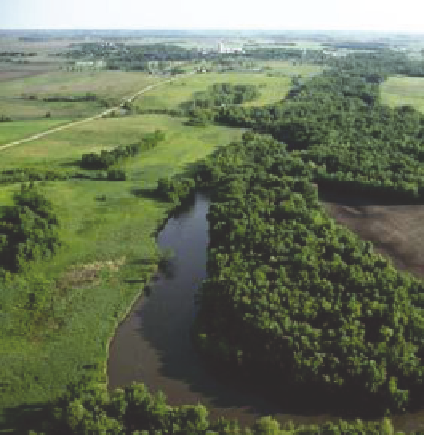Environmental Engineering Reference
In-Depth Information
•
Soil compaction from vehicles, livestock, and impervious surfaces (e.g., pavements) that
might inhibit iniltration or disrupt water low patterns.
•
Excessive leaf litter removal or the alteration of the natural plant community (e.g., rak-
ing, tree thinning, and the introduction of invasive species) that might reduce carbon-rich
organic matter from reaching the stream.
•
Urbanization and other practices that might disconnect the stream channel from the lood-
plain (i.e., channelization, bank erosion, stream incision, and drain tiles) and thereby
reduce the spatial and temporal extent of soil saturation.
Buffers must be monitored and managed to maintain their maximum water quality and wildlife
habitat beneits. Periodic (at least yearly) inspections should be planned and provisions made for
repairs where needed (Mayer et al. 2005) (Figure 8.44).
8.4.27 r
ock
V
aneS
Vanes are linear structures that extend from the streambank into the stream channel in an upstream
direction and mimic the effect of a tree partially falling into a stream. The vane serves to reduce
streambank erosion by redirecting the streamlow toward the center of the stream. In addition, they
tend to create scour pools on the downstream side. Rock vanes are typically linear, while a J-rock
vane is the same as a rock vane but with the end of the vane curling in the shape of a “J,” which
tends to enhance downstream scour pool formation (Center for Watershed Protection Inc. 2000).
The J-rock vane (or J-hook or ishhook) vane reduces near-bank stress to buy time for root develop-
ment (NRCS 2007a) (Figure 8.45).
8.4.28 r
oot
w
adS
Roots wads can be used to delect currents away from erodible banks. Root wads can also be used to
provide complex instream habitats for ish and substrates for aquatic macroinvertebrates (FISRWG
1998; Figure 8.46).
FIGURE 8.44
Forested buffer zone. (Courtesy of NRCS.)

Search WWH ::

Custom Search